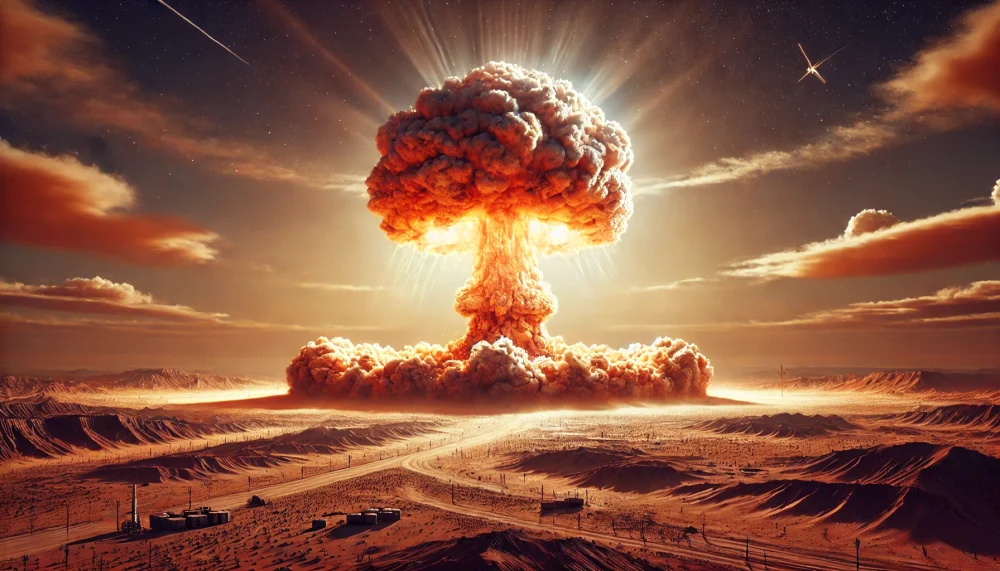The storms of the Sahara that periodically reach Europe transport not only dust and sand but also traces of radioactive isotopes dating back to the nuclear tests of the Cold War. These residues come from the experiments conducted by the United States and the USSR between the 1950s and 1970s
The nuclear legacy of the Sahara: traces of nuclear tests and the dust that reaches Europe
Between 1950 and 1970, the Cold War It was the scene of a series of nuclear experiments that indelibly marked the history of the twentieth century. The nuclear powers of the time, trying to demonstrate their technological supremacy, carried out their detonations in isolated locations, far from the main urban areas.
The United States, for example, led most of the tests in the Nevada desert, while the USSR opt for the vast Kazakhstan and the Arctic. France, during and immediately after the decolonization, chose the Algerian desert as a site to test its nuclear arsenal, with its seventeen explosions between 1960 and 1966.
These released not only thermal energy and shock waves but also a huge amount of radioactive residues, which freed themselves in the atmosphere and formed a real cloud of global contamination.
The atmospheric winds, indifferent to national borders, transported these particles for hundreds and thousands of kilometers, where they deposited on the ground, on the oceans and, in particular, on the deserts, which became the ideal place for the conservation of these radioactive waste.
The Sahara: the tank of nuclear waste
Because of its vastness, of the scarcity of rainfall and its geographical position, the Sahara became the main “deposit” of particles of Plutonio, Cesio and Strazio. These, being particularly stable and durable over time, remained trapped in the dunes, ready to be raised again by the sandstorms that regularly occur in the area.
Well, recent studies conducted on dust samples (collected during the sandstorm of March 2022), confirmed the presence of radioactive isotopes that come from the nuclear tests conducted during the Cold War.
It is useful to specify that, one of the fundamental dynamics that has allowed radioactive particles to travel the world is the link between latitude, altitude and the strength of atmospheric currents. Let’s try to understand better.
Latitude and altitude: decisive factors
The geography of the tests played a decisive role in their dispersion: in fact, the atmospheric currents that move in latitudes between 20 ° and 30 °, favor the transport of radioactive particles to the desert of Sahara.
However, many nuclear explosions of the Cold War did not take place on the ground but, in some cases, even at very high altitudes (even over 30 km). Which, allowed to radioactive particles to be transported to the stratosphere and from there spread on large areas of the planet.
High altitude explosions had a significant impact on the dispersion of contamination, since this material could travel for long distances before falling to the ground.
These currents, which move in different directions depending on the season and climatic conditions, pushed the radioactive residues away from the explosion sites, making them reach remote destinations, such as the Sahara.
A global phenomenon: the link between dispersion and contamination
The sandstorms, which are frequent natural events in the Sahara, act as “transporters” of radioactive particles. When the winds raise the sand, they also carry these radioactive particles trapped in the desert with them. Is there to worry?
A legacy that persists
According to the researchers, although the level of radioactivity is generally low and under the safety thresholds, the fact that this legacy continues to travel through time and space reminds us that the implications of nuclear experiments are not over. The memory of that past continues to influence our present and obliges us to constantly monitor the environment to prevent future long -term consequences.

